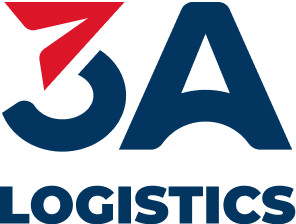In the context of the European Union’s Green Deal reshaping sustainable export regulations, Vietnamese businesses face numerous challenges but also opportunities. This article will analyze how industries ranging from textiles to coffee can adapt to new standards and capitalize on the green transition while maintaining competitiveness in the EU market.
Table of Contents
ToggleWhat is the European Green Deal?
The European Green Deal, introduced by the European Union (EU) in late 2019, is a significant and comprehensive policy program. Its main objective is to transform EU member states into a modern, resource-efficient, and competitive economy while ensuring that the EU becomes carbon-neutral by 2050.
Key points of the European Green Deal include:
- Greenhouse Gas Emission Reduction: Aim to reduce at least 55% of the EU’s greenhouse gas emissions compared to 1990 levels by 2030, with the ultimate goal of carbon neutrality by 2050.
- Energy Transition: Promote the use of renewable energy and enhance energy efficiency, reducing dependence on fossil fuels.
- Circular Economy: Encourage reuse, recycling, and waste reduction to create a circular economy, minimizing resource wastage.
- Biodiversity Protection: Strengthen environmental and biodiversity protection, including preserving natural areas and combating biodiversity loss.
- Sustainable Agriculture: Transition to a sustainable agriculture system through the “Farm to Fork” strategy, aiming to reduce the environmental impact of agriculture.
- Just and Social Transition: Ensure that the green transition does not leave anyone behind by supporting affected regions and communities.
Opportunities and Challenges of the European Green Deal
In recent years, the European Green Deal has become a hot topic among Vietnamese businesses, especially those involved in exports. This deal is not just an environmental regulation but also a detailed roadmap for the EU’s green transition, targeting carbon neutrality by 2050.
Vietnamese businesses are facing significant challenges in adapting to these new standards. For example, the textile industry, a major export sector for Vietnam, needs to focus more on using environmentally friendly materials and sustainable production processes. Leading textile company Vinatex has started investing in recycling technology and using renewable energy in production to meet these standards.
In the coffee industry, Vietnam is one of the world’s largest exporters. However, with the EU Timber Regulation (EUTR), Vietnamese coffee producers must prove that their products are not linked to deforestation. Trung Nguyen Coffee has successfully demonstrated this by applying sustainable farming methods and obtaining certifications from international organizations.
For the iron and steel industry, transitioning to the use of more sustainable materials is a major challenge. Hòa Phát Group, one of Vietnam’s leading steel manufacturers, has begun researching and developing low-carbon emission steel products.
Additionally, the agricultural and fisheries sectors are adjusting to meet new requirements. Products such as rice and seafood must demonstrate environmentally friendly sourcing and production processes.
However, the European Green Deal also presents significant opportunities for Vietnamese businesses. Transitioning to a green business model not only helps them comply with new regulations but also creates a competitive advantage in the international market. Businesses can leverage this opportunity to expand their market share and enhance their brand image.
To adapt to the European Green Deal, Vietnamese businesses need to proactively update information, invest in research and development, and adopt new technologies. Collaborating with international partners to share experiences and learn best practices is also crucial.
Conclusion
The European Green Deal is not just an environmental plan but also a new growth strategy, ensuring that the EU’s economic development goes hand in hand with environmental protection and climate change mitigation.
The EU’s Green Deal is not only a challenge but also a significant opportunity for Vietnamese businesses. The green transition not only helps them comply with new regulations but also opens doors for sustainable and successful development in the international market.
3A Logistics
3A Logistics, a professional export transportation service provider, takes pride in being a leading partner in this field. We offer reliable post-logistics, customs, and domestic transportation services at the most reasonable cost to meet the diverse needs of our customers.
3A Logistics is committed to providing free consultation and addressing any customer concerns during the transportation and customs clearance process. We support customers in using services with confidence while accumulating experience in the export field to maximize cost savings.
To ensure professionalism and safety in export transportation, 3A Logistics has invested in and upgraded a specialized fleet, including various types of wagons such as P for transporting oil, Mc for container transport, Mcc for transporting refrigerated containers, H for transporting high-profile cargo with open roofs, NR for transporting automobiles, and many others. The fleet is equipped with modern technical equipment, assessed according to the latest standards to ensure safety and large transportation capacity.
For more detailed information or to request our services, please contact 3A Logistics. We will be your reliable partner in every export journey.
Contact Information – 3A Logistics
Head Office: 12 floor, Sao Mai Building, 19 Le Van Luong Str, Dong Da Dist, Ha Noi City, VN
Hotline: 0246-296-846
Email: [email protected]
Website: 3a Logistics
Facebook: 3A Logistics
Linkedin: 3A Logistics












